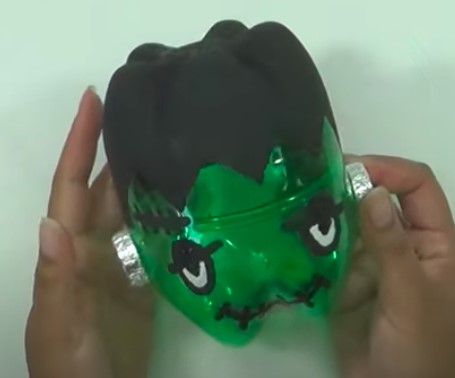You don’t need to buy plastic things to have fun on Halloween!
In today’s blog, we want to give you some ideas for Halloween costumes or decorations from recycled materials.
Let’s go there
Plastic bottle skeleton
First of all, we had the fantastic idea of creating a skeleton made from recycled plastic bottles.
Use one bottle for the head or skull, one for the rib cage, and then 2 or 3 more to create the legs, feet, arms, and hands.

Source: Creaciones Rosario Contreras
Can ghost
Second, ghosts can be created out of plastic cans or containers.
Paint the cans white, turn them over, and paint the eyes and mouth black.
Add strips of white fabric to hang from the can.

Source: Artes Manuales Maymig
spiders with recycled plastic
Take the plastic containers where the frozen ones are packed and paint it black, creating a spooky spider.
Then, take the plastic rings that hold the sodas together and create a stunning spider web.
It will be terrifying!
Ghost lights with plastic bottles
Line up some milk bottles, add black paint to draw their faces, and then put white Christmas lights inside.
It’s a line of ghosts!
Also, on the internet, you can find numerous templates to illustrate the face of ghosts.

Source: Scrappingparados
Frankenstein with recycled bottles
Take two large, empty soda bottles, cut out the bottom of each bottle and join the two parts.
On the top, paint the hair and eyes, then paint the mouth and some screws on the bottom.
Finally, take the bottle caps and wrap them in silver foil; They will look like two screws that you can stick in the bottle simulating the ears.

Source: Ecobrisa Manualidades con Reciclaje
Bats with bottles of liquid yogurt
Save the bottles of liquid yogurt you have at home and paint them black.
Also paint the occasional straws black to simulate the bat’s legs. Draw the wings on a piece of paper, paint them black, and glue them to the bottle.
Just add the eyes!
Today’s blog ends here. We hope you liked it a lot!
You can follow us on our social networks if you want to see more about us.
See you!





